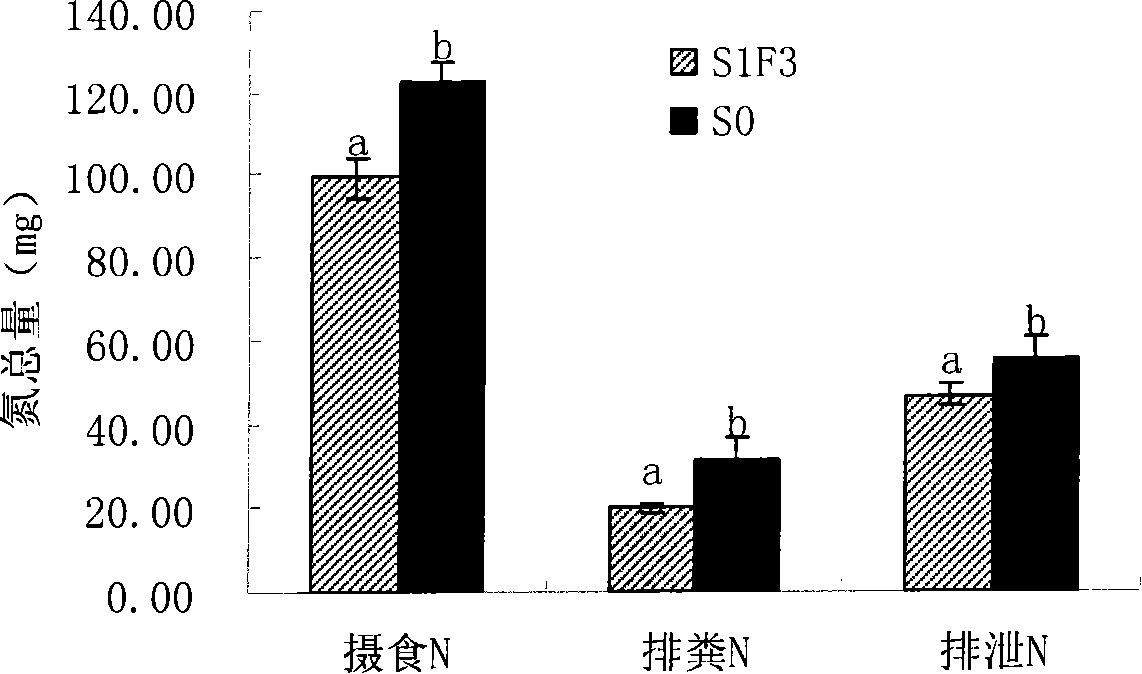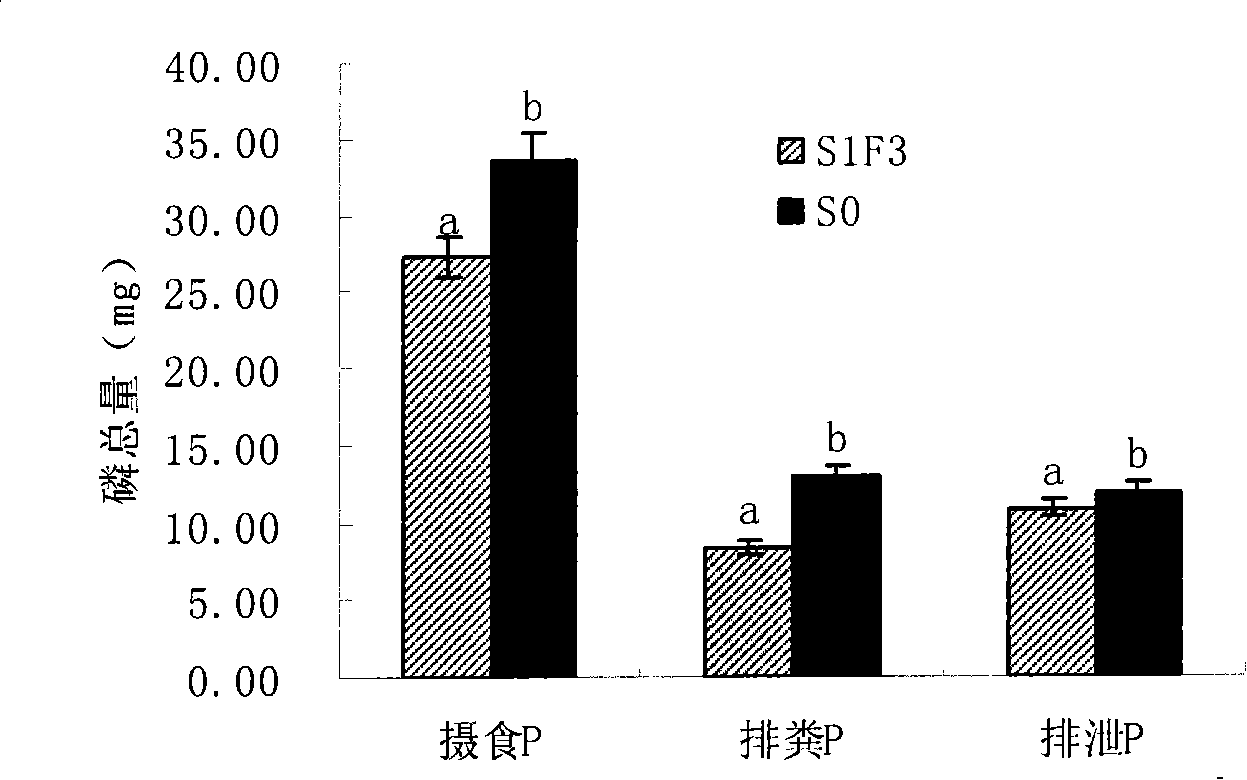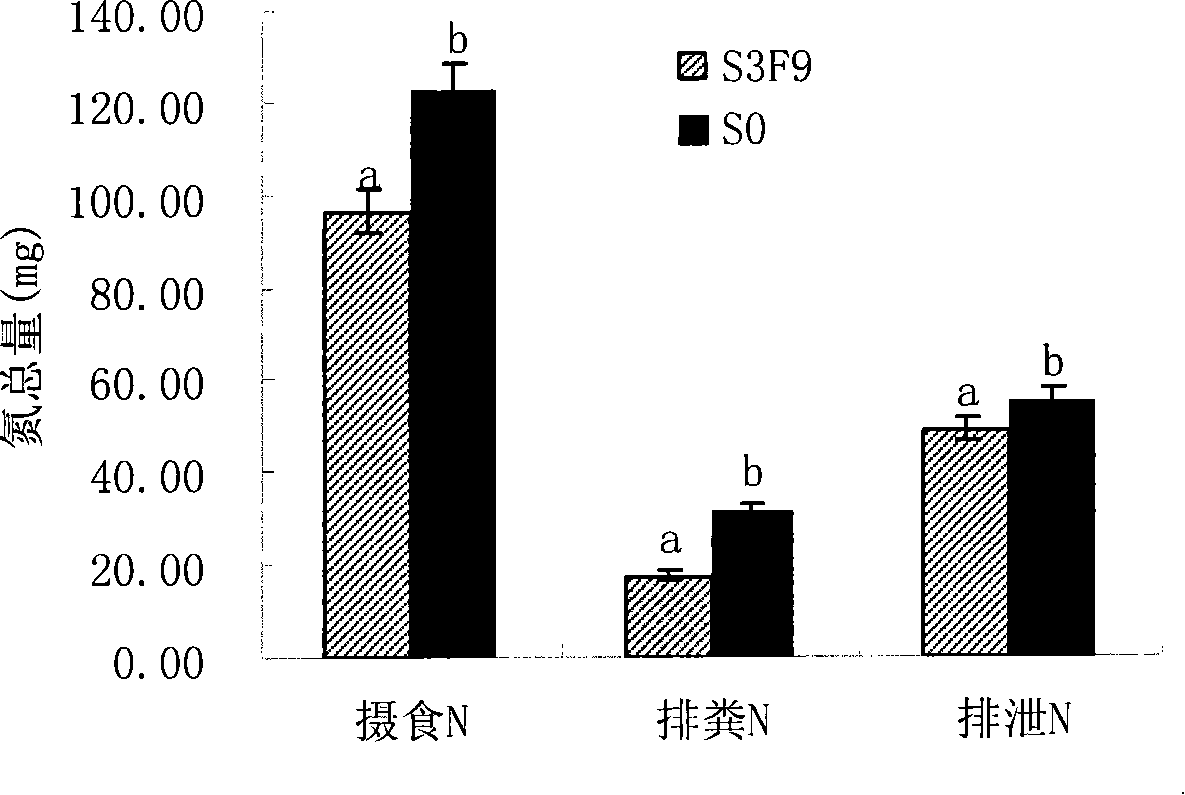Feeding method for reducing nitrogen and phosphorus load of Litopenaeus Vannamei cultivation
A technology of L. vannamei and prawns, which is applied in the fields of aquaculture and marine environmental protection. It can solve the problems of reducing the survival rate of aquaculture and not knowing the discharge of nitrogen and phosphorus, so as to improve the efficiency of food conversion, reduce labor costs, and increase growth speed. Effect
- Summary
- Abstract
- Description
- Claims
- Application Information
AI Technical Summary
Problems solved by technology
Method used
Image
Examples
Embodiment 1
[0029] Using juvenile Litopenaeus vannamei with a wet weight of 0.5g (dry weight 0.142g) as research materials, a starvation-feeding group (S1F3 group) was set up to be starved for 1 day and fed for 3 days, and a total of 9 cycles of 36 days were carried out. . The control group (S0 group) was fed every day. Each group set up 4 aquariums with prawns in parallel, and each box stocked with 8 tails of prawns. No feeding at all during the starvation period, and the compound feed was fed every day during the feeding period (Zhanjiang Yuehai Feed Factory, protein 43%, fat 7%, energy value 19.3kJ g -1 )3 times. The feeding time during the feeding period is 8:00, 14:00, and 19:00 every day. 1.5 hours after each feeding, the residual bait and feces were collected by siphon method, dried and weighed to determine the content of nitrogen and phosphorus. The nitrogen and phosphorus excretion rates of the prawns in each group were measured 3 times a day by running water method. During ...
Embodiment 2
[0035] With the same experimental materials as in Example 1, the starvation-feeding group (S3F9 group) was set to be starved for 3 days and fed for 9 days, and a total of 3 cycles of 36 days were carried out, and other methods were the same as in Example 1. The results of the study showed that compared with the control group (S0 group), there was no difference in the growth and body composition of the prawns (S3F9 group) treated with starvation for 3 days-feeding for 9 days, while the food conversion efficiency increased by 25.0% (see Table 2). The nitrogen load caused by shrimp defecation in the treatment group was reduced by 44.5% (see image 3 ), the phosphorus load was reduced by 46.0% (see Figure 4 ); 12.0% reduction in nitrogen load caused by shrimp excretion (see image 3 ), the phosphorus load was reduced by 9.1% (see Figure 4 ). In addition, 25% of the days in the treatment group were not fed, so there was no residual bait at all.
[0036] The growth situation ...
Embodiment 3
[0039] Using juvenile Litopenaeus vannamei with a wet weight of 0.6g as research materials, a starvation-feeding group (S2F5 group) was set up for 2 days and fed for 5 days, and a total of 6 cycles of 42 days were carried out. The control group (S0 group) was fed every day. Each group has 3 glass fiber reinforced plastic drums (bottom diameter 70cm, water volume 0.3m 3 ) in parallel with prawns, and 50 prawns are stocked in each bucket. The treatment group did not feed at all during the starvation period, and fed 3 times a day during the feeding period, and the feeding time was 8:00, 14:00, and 19:00 every day. During the experiment, 1 / 3 of the water was changed every day, and the ammonia nitrogen and phosphate in the water were measured once every 7 days, before changing the water. Each bucket is continuously inflated, the dissolved oxygen is kept above 5.0mg / L, the water temperature is 28-30°C, and the salinity is 27-29.
[0040] The results of the study showed that compa...
PUM
 Login to View More
Login to View More Abstract
Description
Claims
Application Information
 Login to View More
Login to View More - R&D
- Intellectual Property
- Life Sciences
- Materials
- Tech Scout
- Unparalleled Data Quality
- Higher Quality Content
- 60% Fewer Hallucinations
Browse by: Latest US Patents, China's latest patents, Technical Efficacy Thesaurus, Application Domain, Technology Topic, Popular Technical Reports.
© 2025 PatSnap. All rights reserved.Legal|Privacy policy|Modern Slavery Act Transparency Statement|Sitemap|About US| Contact US: help@patsnap.com



